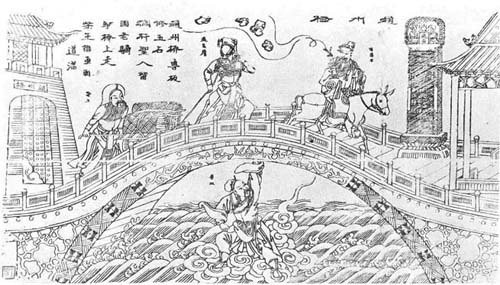Guilin

Guilin has been the capital of Guangxi province since its establishment until the Republic of China era. It is well known for it’s beautiful scenery. Click here to learn more about Guilin’s history and click here for all things Guilin from attractions to weather.



In Guilin resides a Painted Fans Town. Local peasant drawers create paintings, calligraphy, good sayings and poems on fans.


A county in Guilin called Lipu has cultivated wild Lipu Taro for 400 years. Lipu Taro is known to strengthen the spleen and the stomach. It is used commonly in dishes and snacks and was a royal attribute in ancient time.
Click here to learn more about shopping in Guilin.

To learn more about Guilin dining, click here.

And lastly, click here to learn more about activities that occur in Guilin.

The annual Guilin Landscape and Cultural Tourism Festival is held from October to December and is an international tourist event. Its purpose is to “promote the further development of Guilin tourism through a series of art performance with local flavors, sport events and competitions, commercial expositions and fairs, as well as activities of exploration in scenic areas” (Chinatravel.com ).
Qianjiadong
(Page 255)
Qianjiadong refers to the Yao ancestor’s first habitat place. In the past, Yao people lived in peace and harmony, but were forced to leave by the emperor. This lost land was discovered deep in the mountains between Guangxi and Hunan. Once you walk in it, Qianjiadong is a large land of farms, hills, and waterfalls.

Click here to discover Qianjiandong, the birthplace of the Yao people.
Click here to read the Yao’s Origins in Qianjiandong with provided videos.
Click here to read about Qianjiandong in Litzinger’s Other Chinas: The Yao and the Politics of National Belonging starting on page 73.
Shangjiangxu
“
This town is commonly known as the birthplace of the written language known as Nu Shu, an ancient style of language based off Chinese characters used only by woman to communicate. It resides between the Daoxian and Jinagyong Counties in the Hunan Province.
Shexia

Click here and here to learn more about Shexia.
Tongkou Village
Tongkou Village is situated by the Yongming river in the in Daoxian County. According to records this village began during the Song Dynasty and still is here today. Within Tongkou village there are at least 100 ancient homesteads built between the Ming and Qing Dynasty.


Xiao River
The Xiao River is a small tributary to it’s parent, the Xiang River, and is located in the East China Sea Basin. The Xiang River runs through Yongming (Jiangyong) County, Lily’s home.
While the river itself isn’t very famous, it harbors a famous bridge, called the Zhaozhou Bridge. The bridge is very old, dating back to 595 AD, and has been given many awards for its architectural feat of the open spandrel arch.
One award is the International Historic Civil Engineering Landmark, curtsey of the American Society of Civil Engineers in 1991. It is considered “the oldest and best preserved open-spandrel stone segmental arch bridge in the world.”
Click here for more info on the Xiang River, as well as other tributaries that connect to it.
Click here for an in depth look at the Zhaozhou Bridge. This site also provides the tale of Zhaozhou Bridge, more information on the famed spandrel arch, and more.
Yongming County
(Page 9)
Yongming County is the county where Lily’s natal home is located. Today it is called Jiangyong County in Hunan province.

Click here to read about Hunan, the province of Jiangyong County on its official government website.
Click here to read about the history, geography, and culture of Hunan province.








I have just finished reading Snow Flower and the Secret Fan. I was spellbound by the lives of these women and am haunted by how different, yet similar we are as women!